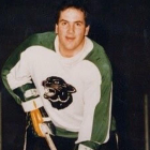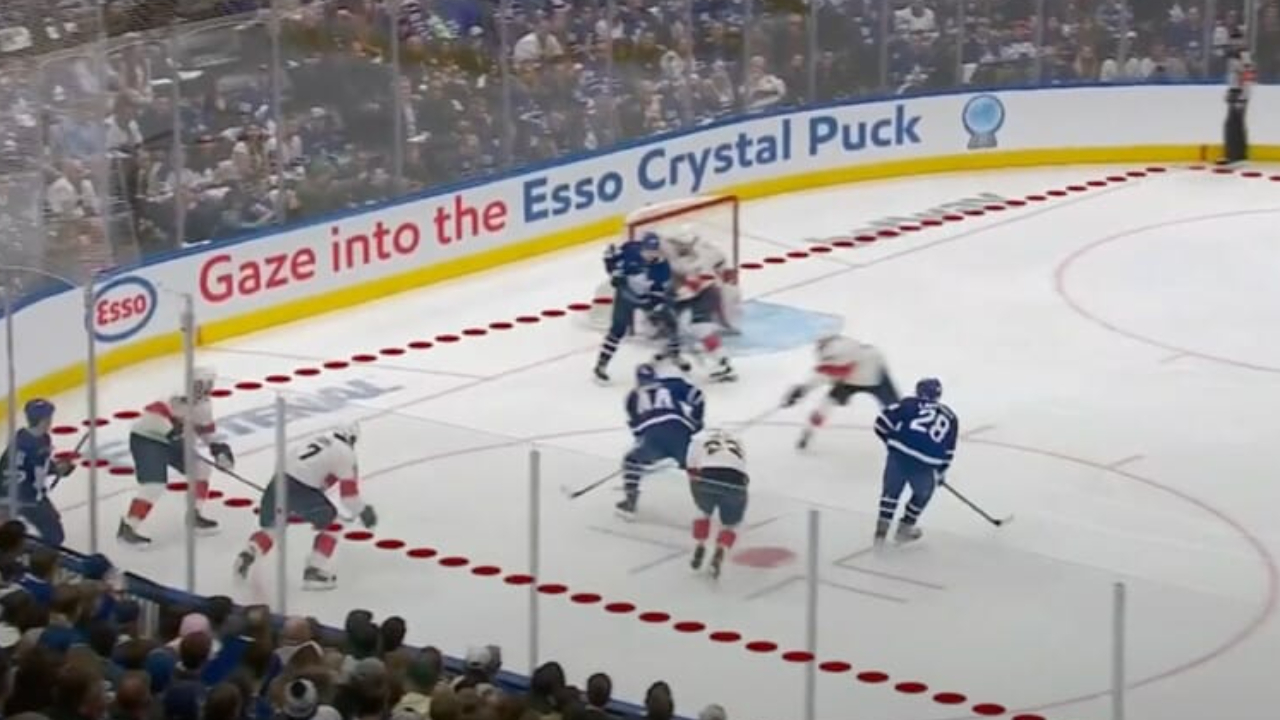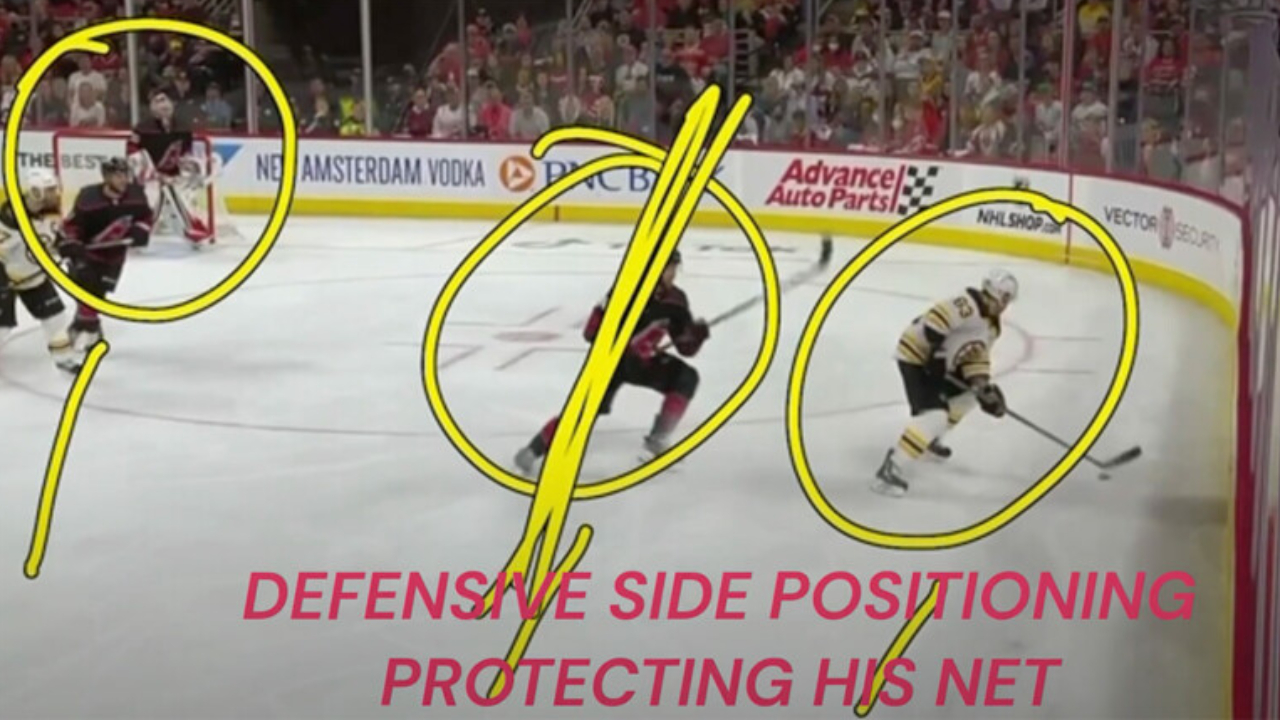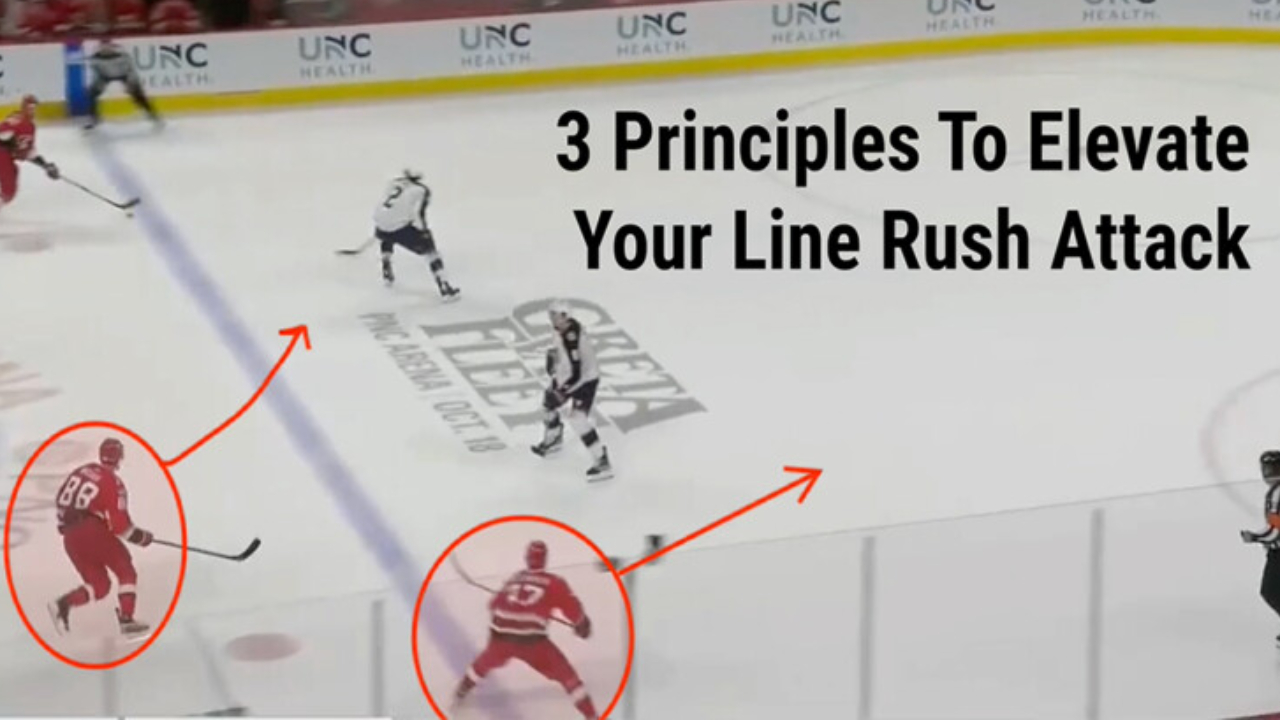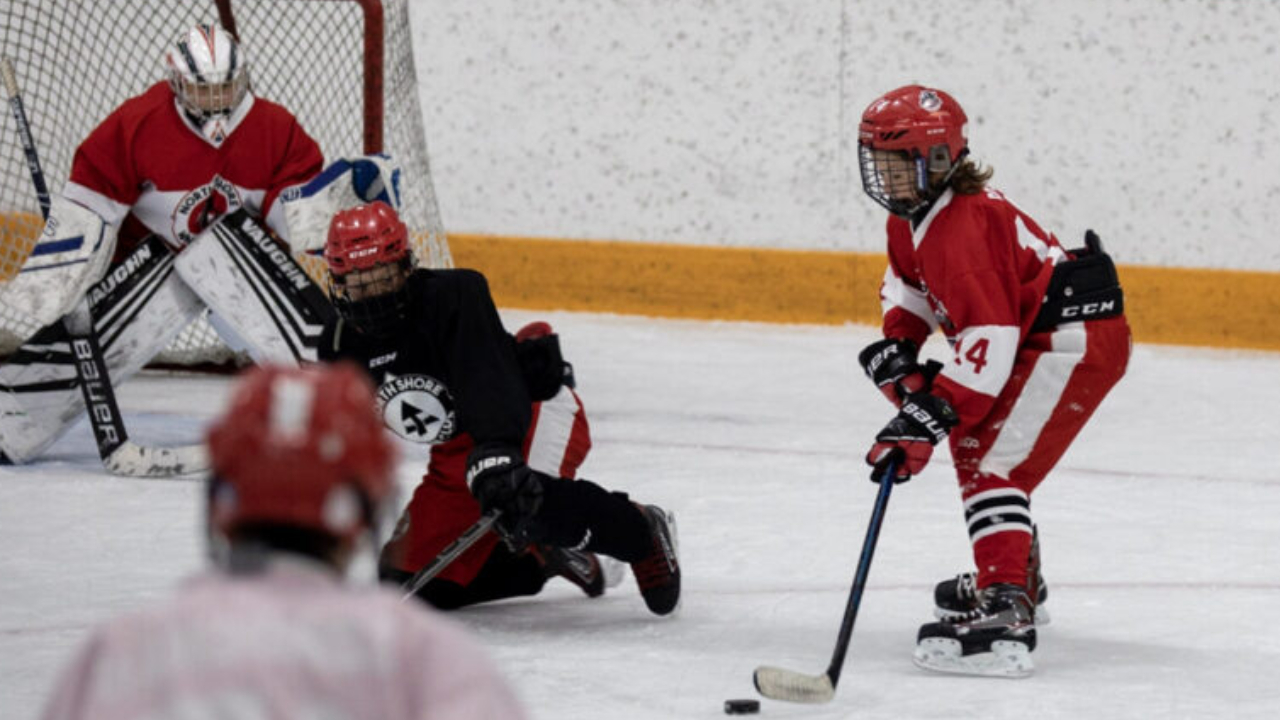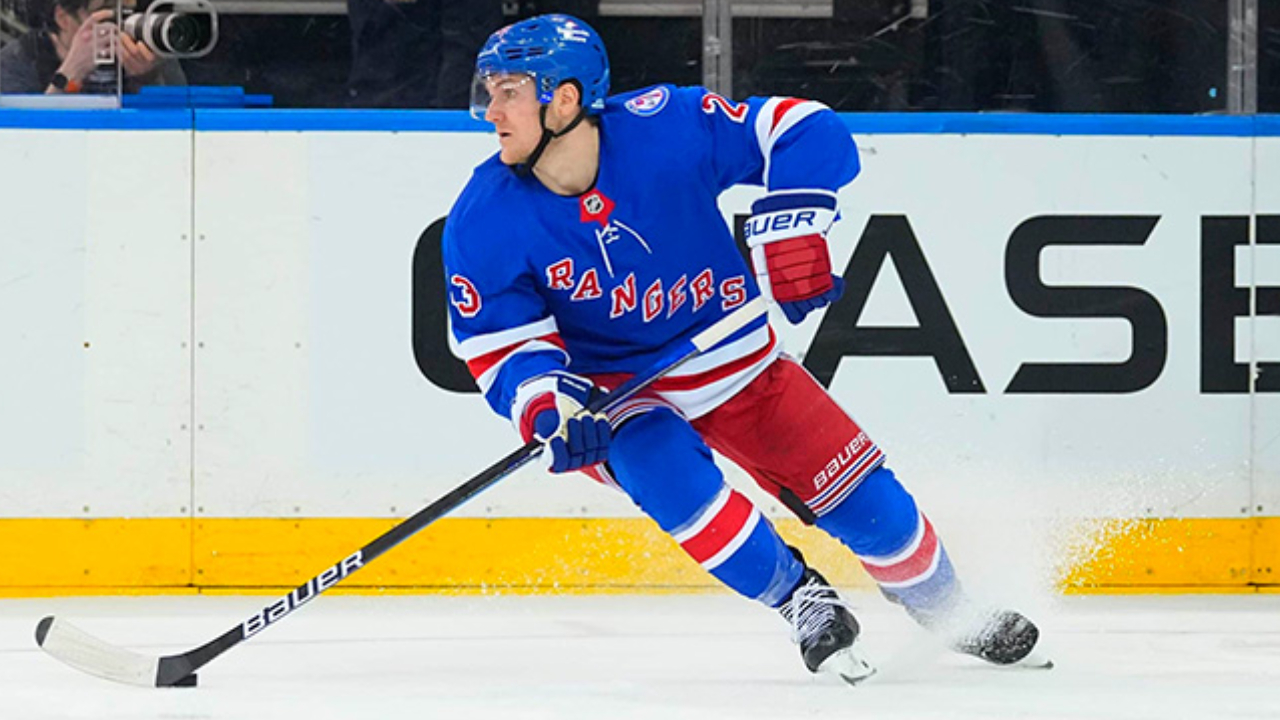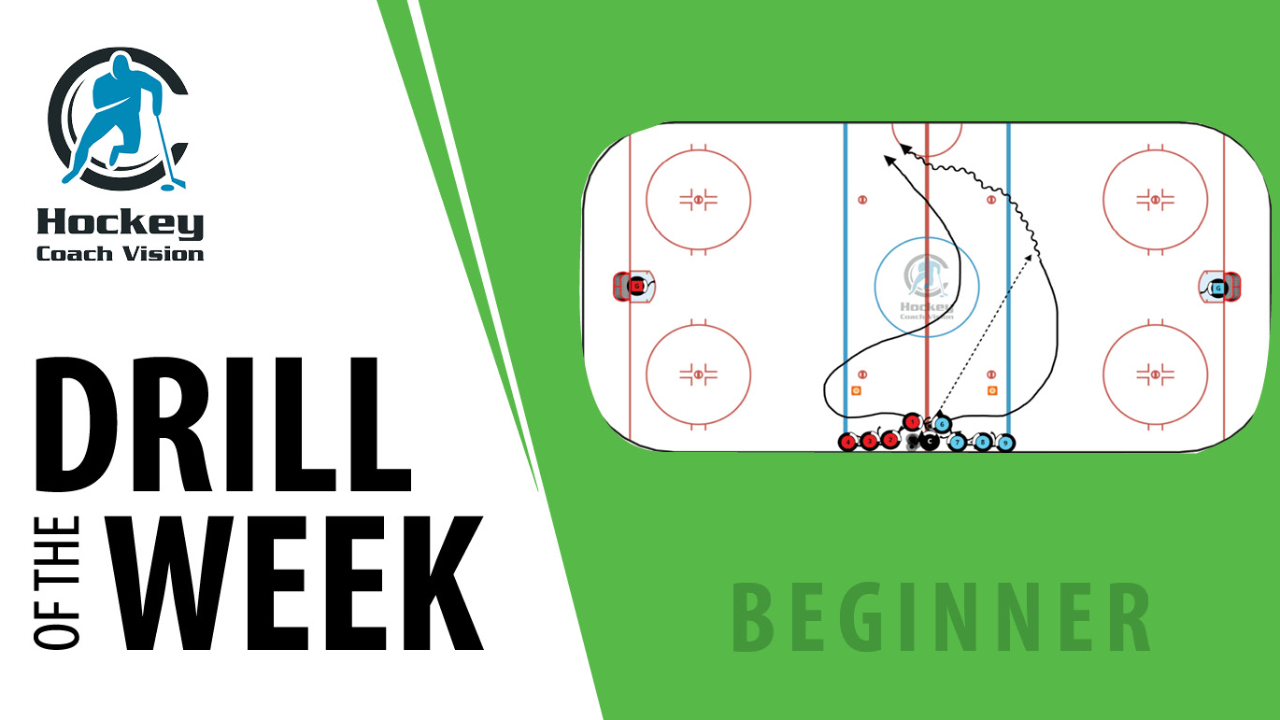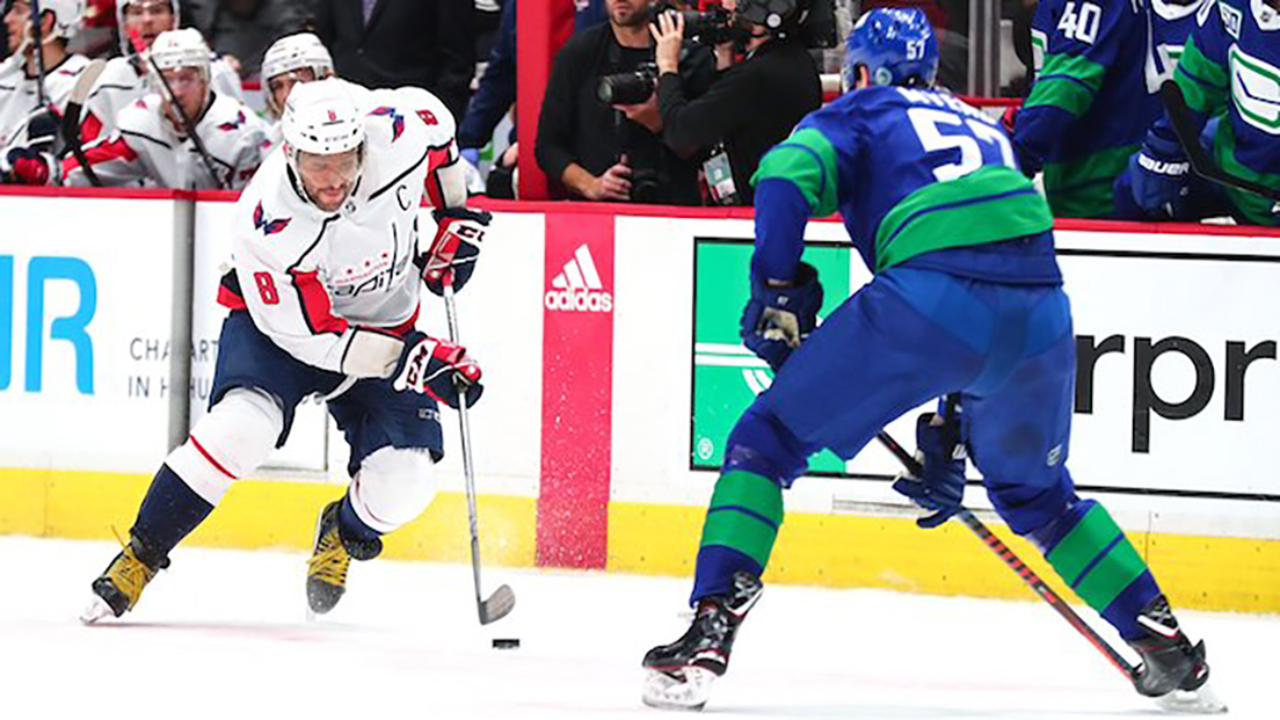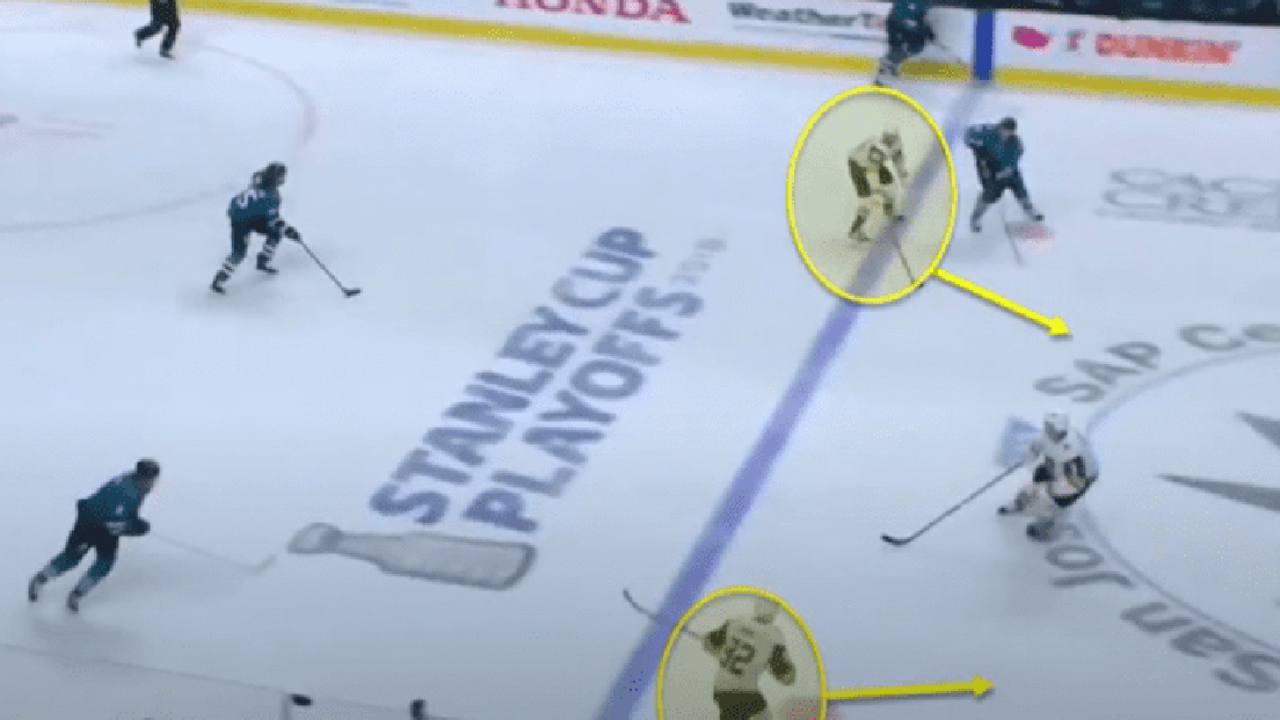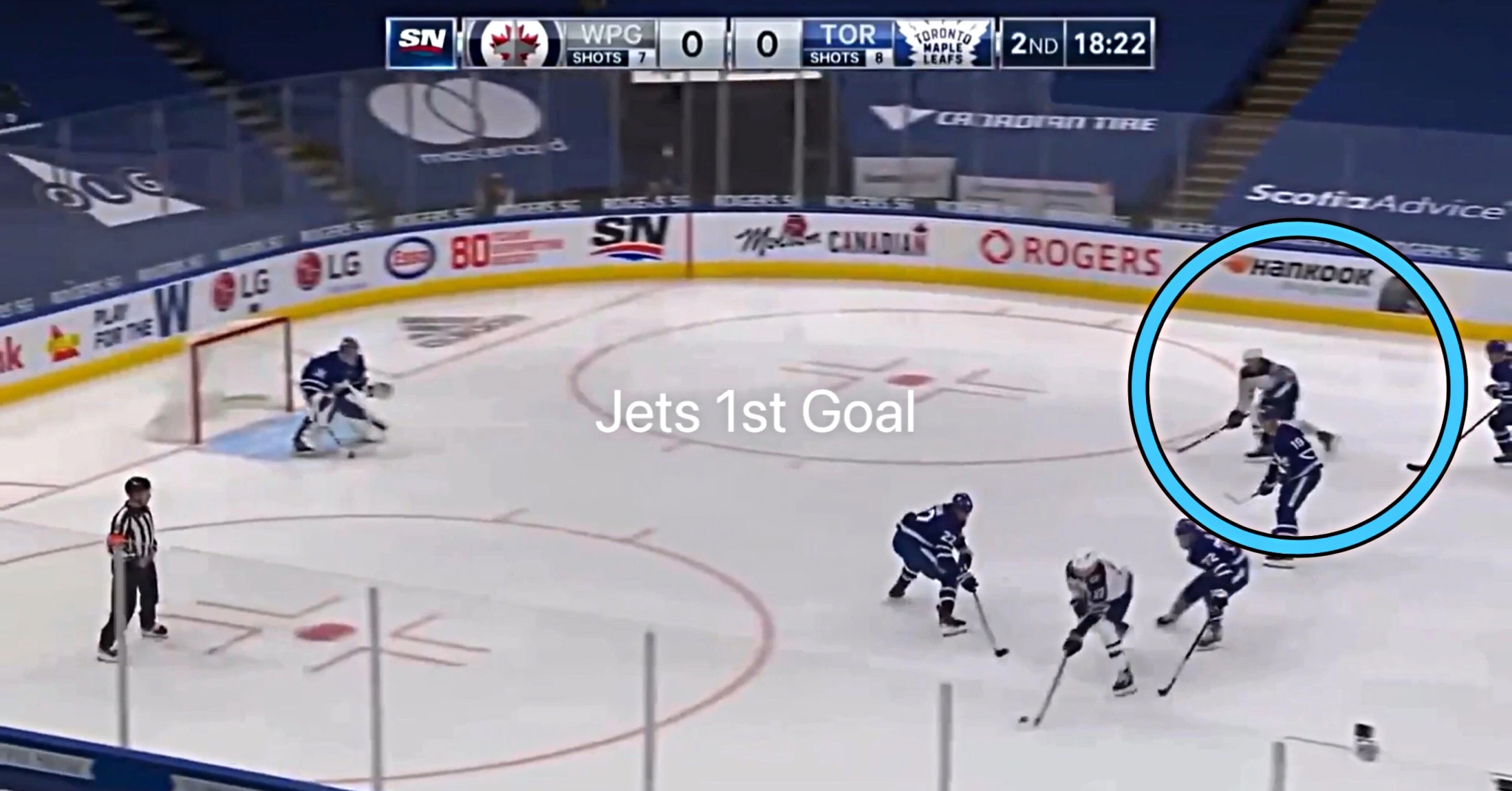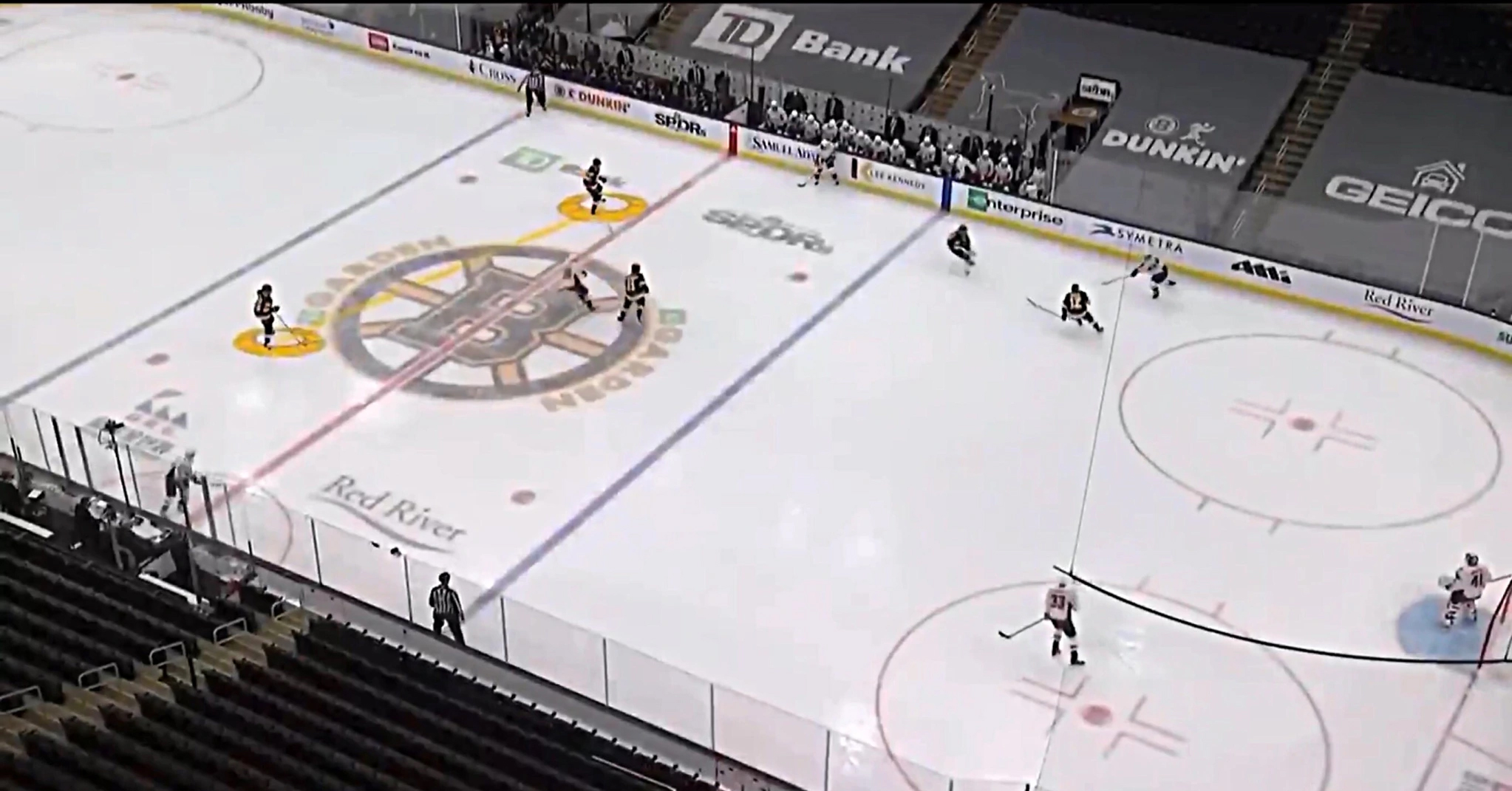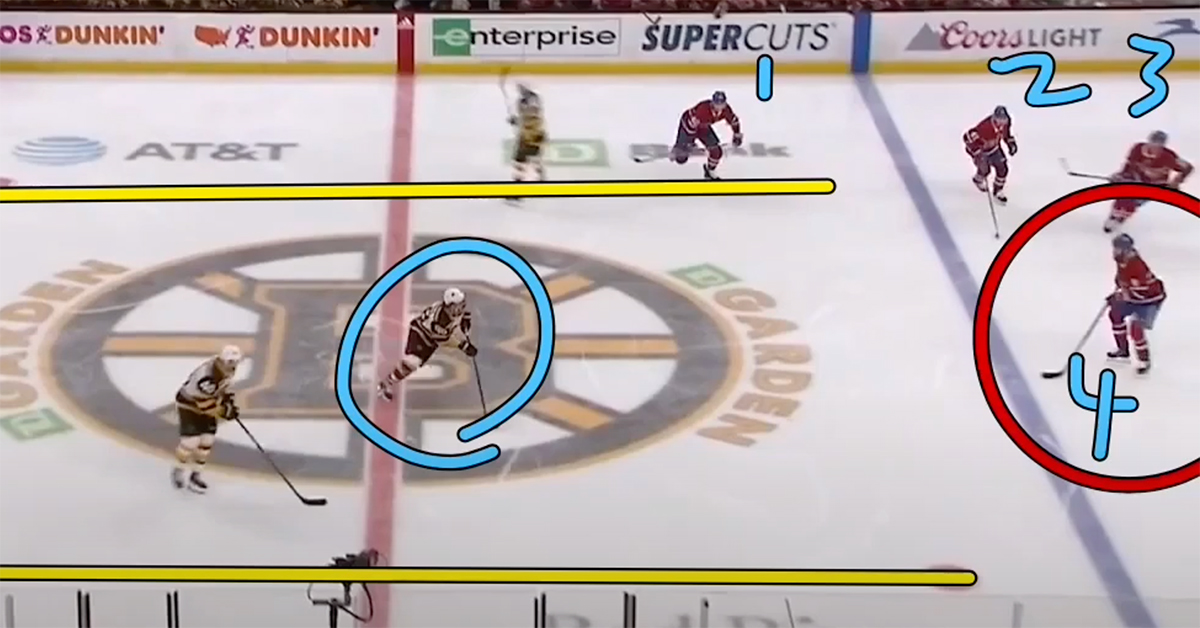
Strategy & Tactics
Goal scorers know the importance of entering and exiting the neutral zone (NZ) with speed and puck control. These players know the shortest distance to your net is through middle ice (between the dots) so you’d better be prepared to defend this area. It’s much harder for a puck carrier to take the puck wide outside the dots and beat a defender with speed to the outside and drive the net than it is to take the puck directly at a defender, push it through or by them and pick it up on the other side.
In the video clip below the puck carrier has full puck control in the neutral zone and he is able to beat two defenders by pushing the puck through and by the defenders, picking it up on the other side of them, to go in all alone on the goalie. Lucky for the defenders, the puck carrier didn’t score on the play. The talented player with the puck makes the two defenders look bad because of their failure to defend against a play that should be easy to defend.
The following are the keys to defending middle ice in the neutral zone:
• Proper Angling Technique: the ability to exercise (use) inside out control on a puck carrier by controlling/protecting middle ice and forcing the puck carrier to the outside. Taking the correct approach angle toward the puck carrier is key. The defender must judge the skating ability and speed of the puck carrier because the only option for the puck carrier is to take the puck wide and beat the defender with speed. The player angling the puck carrier must get shoulder to shoulder with the opponent and NOT reaching first before playing body|stick|puck. A player who has mastered Angling Technique & Fundamentals never gets beat to the inside.
• Playing Body|Stick|Puck: the ability to be in a good hockey position; right amount of knee flexion, butt out with chest over thighs, weight on the inside of your feet in good balance to get shoulder to shoulder with the puck carrier to separate the player from the puck with your shoulder and get your stick under the puck carrier’s to gain access to the puck in the same motion. The puck separation through the checking motion is non violent. The goal is to regain puck possession, not to knock the player over or down.
• Defensemen Defending the Blue Line: the ability to defend the blue line requires the defensemen to be able to match the speed of the oncoming puck carrier by backward skating between the dots (protecting middle ice) and giving the puck carrier ONLY one option to beat him and that is to the outside. The defensemen’s partner must be playing between the dots as well backing up a couple stick lengths at most apart from each other to protect middle ice. A defensemen must have the skills and abilities to pivot to the outside and use speed to close the gap and get into the puck carrier taking away space forcing the puck carrier to the wall. Defensemen must play tight GAPS in the neutral zone to ensure their ability to match an oncoming forwards speed with the puck at their blue line and play one stick length GAP at the blue line. A skilled defensemen doesn’t give away the blue line by continuing to back up when there is defensive back pressure support from forwards.
• Defensemen One on One Play – Body First and NOT the Puck: the ability of a defensemen to defend against a puck carrier in a One on One situation with the puck carrier entering the offensive zone requires strong fundamentals.
The following fundamentals must be adhered to if you’re going to prevent yourself from being beat One on One by a forward carrying the puck into the offensive zone:
– Back up between the dots, protect middle ice.
– Match the puck carrier’s speed with your backward skating speed.
– Good posture matters and assures the ability to remain in balance, weight never forward on
your toes.
– Never allow the puck carrier inside your stick length, if you do, you’re beat.
– Eyes on the puck carrier’s sternum (chest) NOT on the puck. Your peripheral vision allows
you to see the puck while your eyes are on the chest.
– Keep your stick arm bent at the elbow so that you can poke or sweep check effectively. Never
out reached with a straight arm fishing with weight forward on your toes.
– Always keep your body between the puck carrier and your net and get your shoulder into the
puck carrier when playing the body.
– Timing of your Pivot is key to being able to close the gap and stay with the puck carrier as
your force him wide (outside the dots) towards the wall.
Video Breakdown
In the clip below the following mistakes were made resulting in the puck carrier being able to take the puck the shortest distance to the net (between the dots):
• Defender #26 stopped skating when he attempted to angle the player wide and chose to reach and play the puck instead of getting shoulder to shoulder and play body|stick|puck. Never play puck first and reach when you’re angling an opponent.
• The Defensemen made the following mistakes in his execution of the One on One:
– Backward skating speed didn’t match the opponent’s forward skating speed,
– Weight was forward on the toes and he was reaching with his stick too far forward to playing
puck,
– Eyes were on the puck NOT the opponent’s chest,
– Played the puck first instead of the body,
– Allowed the puck carrier inside his stick length which is always fatal,
– Failed to force the puck carrier wide and gave away middle ice.
Development Focus
Young players are reminded to focus on proper technique and fundamentals. There is right and wrong way in executing fundamentals, no easy way. Good players practice what they are weak at not their strengths. If you’re aspiring to play at higher levels of competition, focus on fundamentals.
